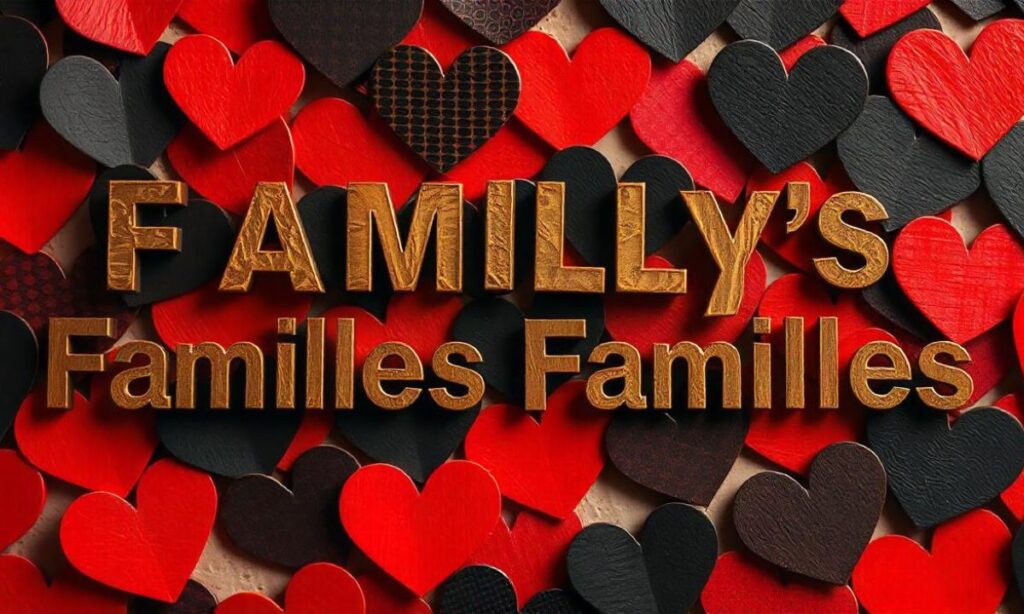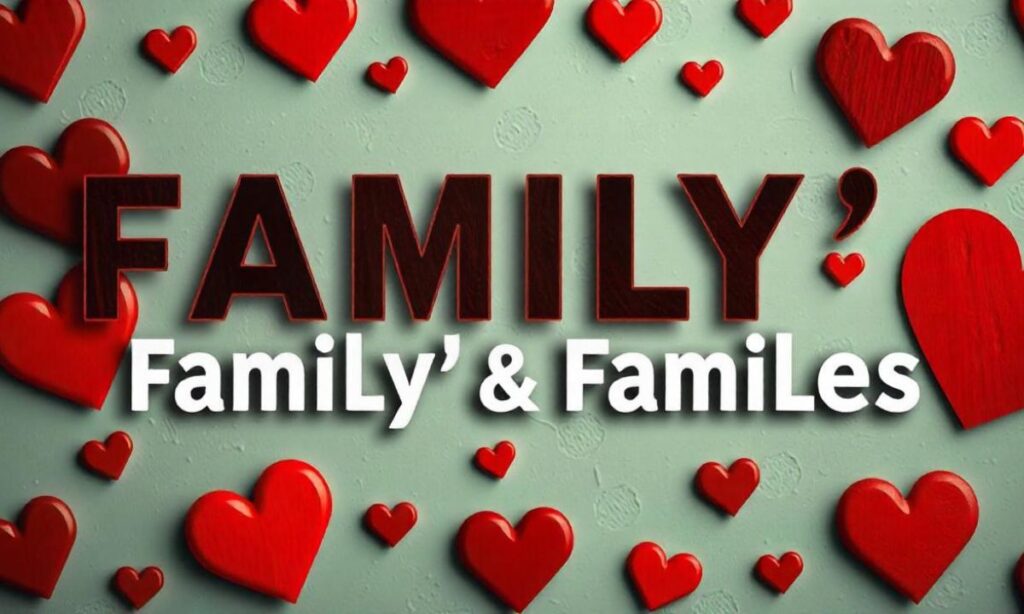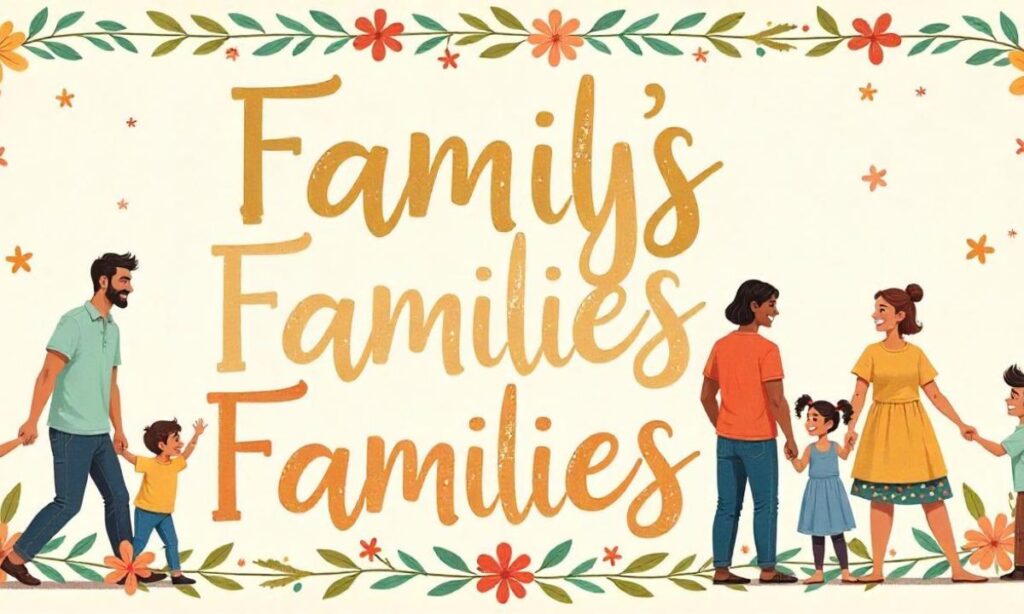Have you ever found yourself staring at a sentence, wondering whether to use “family’s,” “families,” or “families‘”? You’re not alone. Grammar can be a tricky beast, especially when it comes to possessive forms and plural usage. Family grammar is one of those nuanced areas that trips up even seasoned writers and speakers.
Imagine sending an important email or drafting a crucial document, only to realize you’ve used the wrong form. Embarrassing, right? This comprehensive guide will walk you through the intricate world of family-related grammar, breaking down each form with crystal-clear examples and practical insights.
Family’s (Singular Possessive): Ownership by One Family

When we talk about singular possessive family usage, we’re referring to something that belongs to a single family unit. The apostrophe before the “s” indicates ownership by one specific family.
Real-World Examples:
- Correct Usage: “The Smith family’s annual reunion is a highlight of our year.”
- Here, the reunion belongs to the Smith family as a single unit.
- Professional Context: “Our company reviewed the family’s insurance policy carefully.”
- The policy is owned by one family group.
Deep Dive into Singular Possessive
| Aspect | Details |
| Definition | Shows ownership by a single family unit |
| Apostrophe Placement | Before the “s” |
| Usage | Indicates something belonging to one family |
| Example Scenario | Family’s home, family’s traditions, family’s decision |
“Precision in language is the hallmark of clear communication.” – Grammar Experts
Families (Plural Form): Talking About Multiple Family Units
When we use the word “families” without an apostrophe, we’re simply referring to more than one family group. Think of it as a straightforward way to talk about multiple family units without indicating ownership.
Whether you’re discussing community dynamics, social trends, or statistical data, the plural form comes into play. It’s the most basic way to indicate that you’re talking about several distinct family groups, each with its own unique characteristics and experiences.
The simple plural form families represents more than one family group. It’s straightforward and doesn’t indicate possession.
Contextual Examples:
- Community Perspective: “Many families in our neighborhood participated in the local charity event.”
- Refers to multiple family groups without ownership implication.
- Statistical Context: “Modern families come in diverse structures and configurations.”
- Discussing family groups in general.
Understanding Plural Usage
- Multiple family units
- No possession indicated
- Simply means “more than one family”
- Used in general discussions about groups of families
Families’ (Plural Possessive): Ownership by Multiple Families

The plural possessive form “families'” adds a layer of complexity to our language. It indicates that something belongs to or is shared by multiple families. Imagine a neighborhood where several families collectively maintain a community garden or share a recreational space.
This is where “families'” shines, showing collective ownership or shared experience. It’s a nuanced way of expressing how different family units can come together, share resources, or have common interests that transcend individual household boundaries.
Plural possessive families’ gets even more nuanced. This form indicates something belonging to multiple families.
Practical Examples:
- Shared Resource: “The families’ shared community center became a neighborhood landmark.”
- Ownership spread across multiple family units.
- Legal or Formal Writing: “The suburban families’ property values have increased significantly.”
- Multiple families collectively owning or experiencing something.
Breakdown of Plural Possessive
| Key Aspect | Explanation |
| Apostrophe Position | After the “s” |
| Ownership Scope | Multiple family units |
| Typical Contexts | Shared resources, collective experiences |
Why Precision Matters: Communication Clarity
Precise grammar isn’t just about following rules—it’s about crystal-clear communication. A misplaced apostrophe can completely change the meaning of a sentence, leading to confusion, misunderstandings, or even legal complications.
Consider professional documents, emails, or contracts where the difference between “family’s” and “families'” could alter the entire interpretation of a statement. Precision in language demonstrates professionalism, attention to detail, and respect for your audience’s understanding.
Scenario: The Email Mix-Up
Consider this: An email reading “The families meeting” versus “The families’ meeting” has entirely different meanings.
- First version: Multiple families are meeting
- Second version: A meeting belonging to multiple families
Contract Correction: A Costly Mistake
In legal documents, a misplaced apostrophe can alter meaning dramatically:
- “Family’s agreement” (one family’s agreement)
- “Families’ agreement” (multiple families agreeing)
Practical Tips for Avoiding Grammar Mistakes

Conquering grammar challenges doesn’t have to be intimidating. Start by developing a habit of pausing and double-checking your writing. Read your sentences out loud—your ear can often catch what your eyes might miss.
Keep a reliable grammar guide nearby or use digital tools that provide real-time writing suggestions. When in doubt, break down your sentence and ask yourself:
Are you talking about one family or multiple families? Are you indicating ownership? Context is key to choosing the right grammatical form.
- Always Double-Check
- Pause and ask: “Am I talking about one family or multiple families?”
- Determine if you’re showing possession
- Use Context Clues
- Look at surrounding words
- Consider the number of family units you’re discussing
- Read Aloud
- Hearing the sentence can help catch grammatical errors
Practice Makes Perfect: Improvement Strategies

Becoming a grammar pro is a journey of continuous learning and practice. Read widely across different genres to expose yourself to varied writing styles. Write regularly, whether it’s journaling, blogging, or professional communication.
Don’t shy away from asking for feedback from colleagues, friends, or writing groups. Embrace online resources like grammar websites, podcasts, and interactive learning tools. Remember, every grammar mistake is an opportunity to learn and improve your communication skills.
- Keep a Grammar Cheat Sheet
- Use Online Grammar Tools
- Read Widely
- Write Regularly
- Ask for Feedback
Families vs Family’s: Understanding the Difference
When navigating the nuanced world of family grammar, the distinction between “families” and “family’s” can trip up even seasoned writers. “Families” simply refers to multiple family groups without any ownership, while “family’s” indicates something belonging to a single family unit.
For instance, you might say “Many families attended the event” (multiple family groups) versus “The Smith family’s tradition” (something specific to one family).
Families or Family’s: Choosing the Right Form
Selecting between “families” and “family’s” depends entirely on context and intended meaning. Are you talking about multiple family groups in general, or highlighting something owned by a specific family?
The key is to pause and consider your precise communication goal. In professional writing, this subtle distinction can make a significant difference in clarity and precision.
Familys: A Common Grammatical Mistake
The term “Familys” is actually incorrect and represents a common grammatical error. When referring to multiple families, always use “families” (with an “i”).
When showing possession, use either “family’s” (singular) or “families‘” (plural). This small nuance can dramatically improve the accuracy and professionalism of your writing.
Family or Families Grammar: A Comprehensive Guide
Family grammar involves understanding the subtle shifts between singular and plural forms, as well as possessive variations. Whether you’re writing about one family’s experiences or discussing multiple families’ shared experiences, the placement of the apostrophe and the context of your sentence are crucial. Mastering these distinctions elevates your communication from good to exceptional.
Conclusion: Embrace Grammatical Nuance
Understanding the subtle differences between family’s, families, and families’ isn’t just about following rules. It’s about communicating with precision, clarity, and confidence.
Remember, grammar is a tool for connection. Each carefully placed apostrophe brings you closer to expressing exactly what you mean.
Quick Reference Guide
| Form | Usage | Example |
| Family’s | Single family ownership | The Johnson family’s vacation home |
| Families | Multiple family units | Several families attended the event |
| Families’ | Ownership by multiple families | The families’ shared playground |
Essential Grammar Tools for Writers
| Tool Name | Type | Key Features |
| Grammarly | Online/Desktop | • Real-time grammar and spelling checks |

